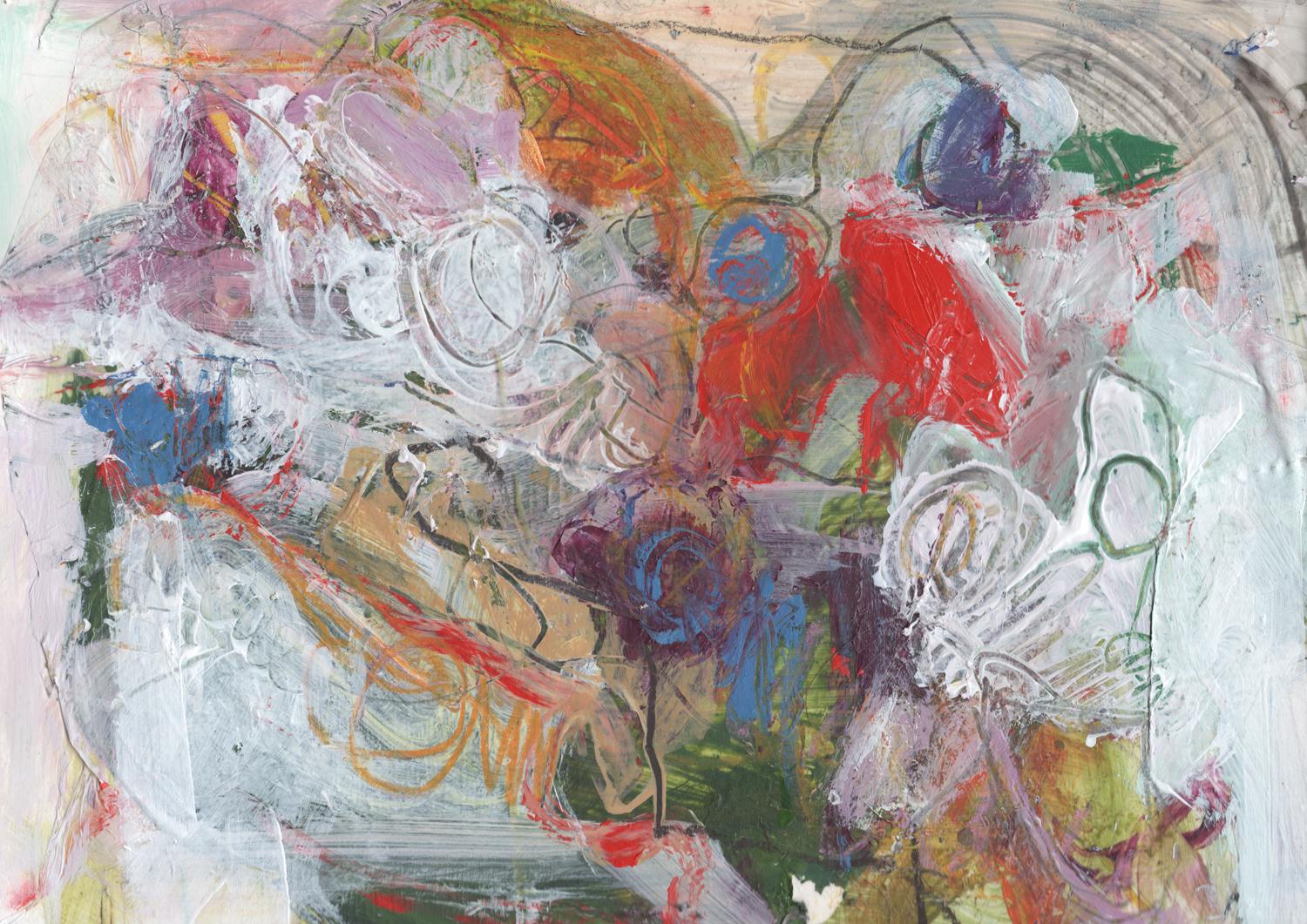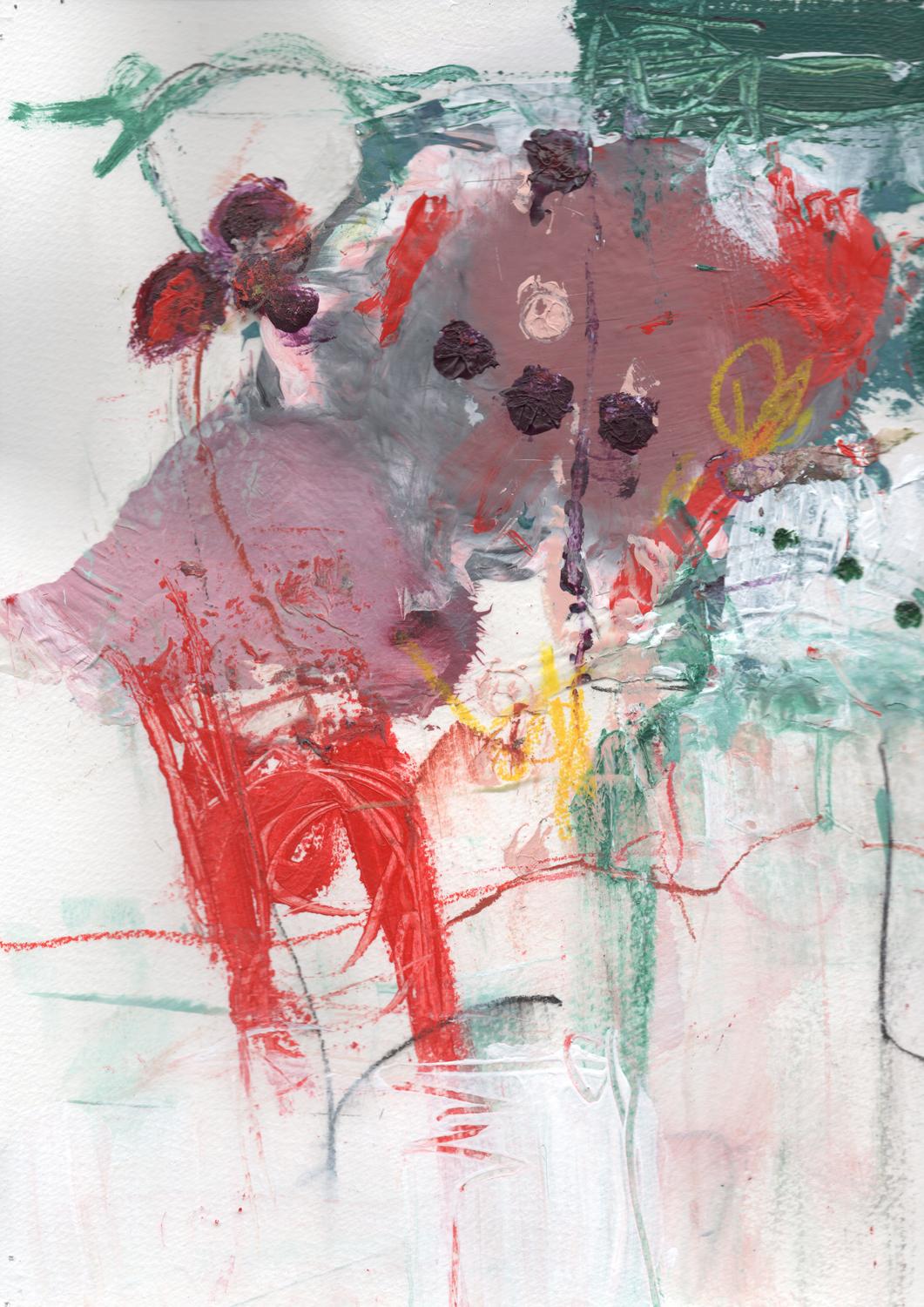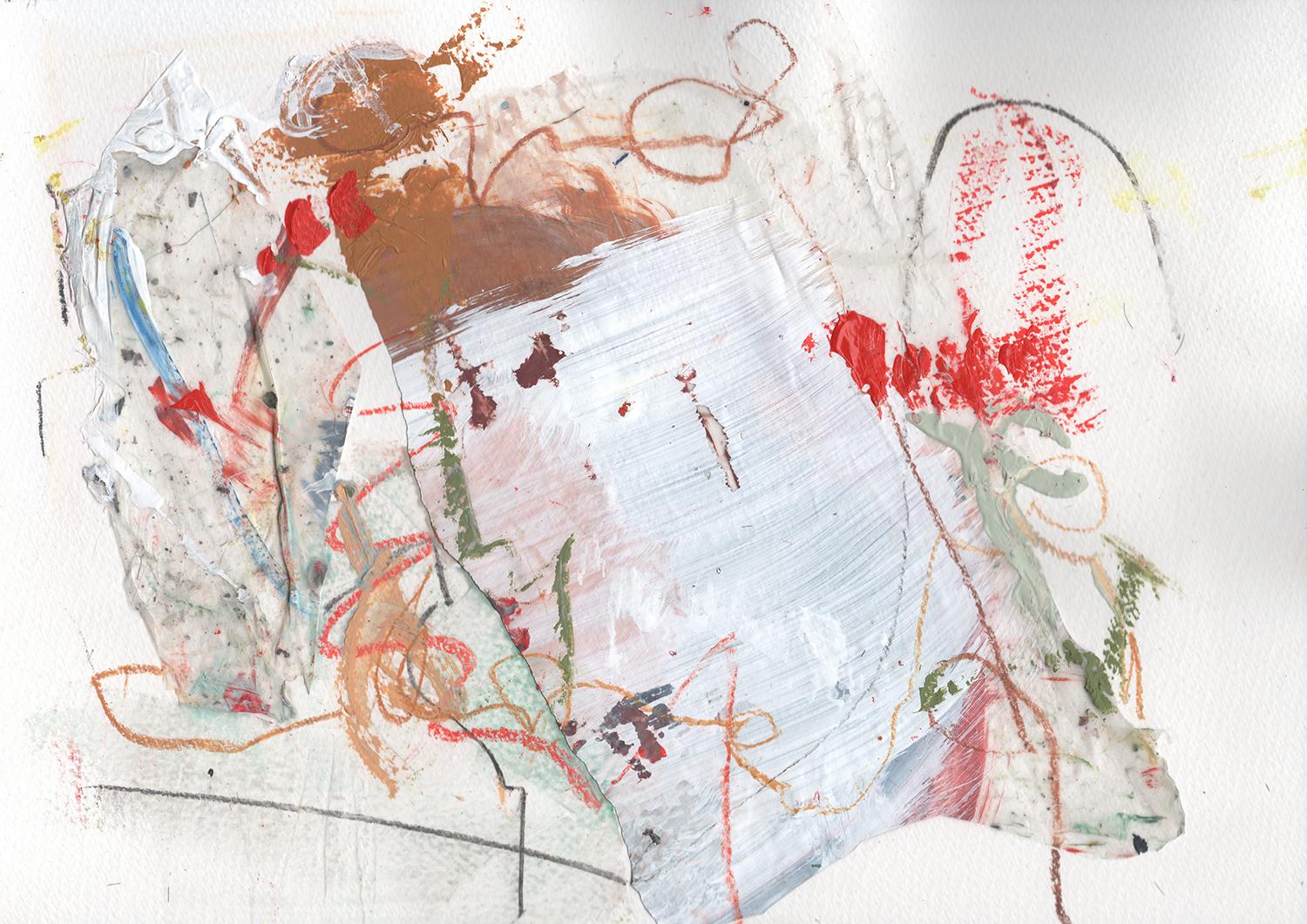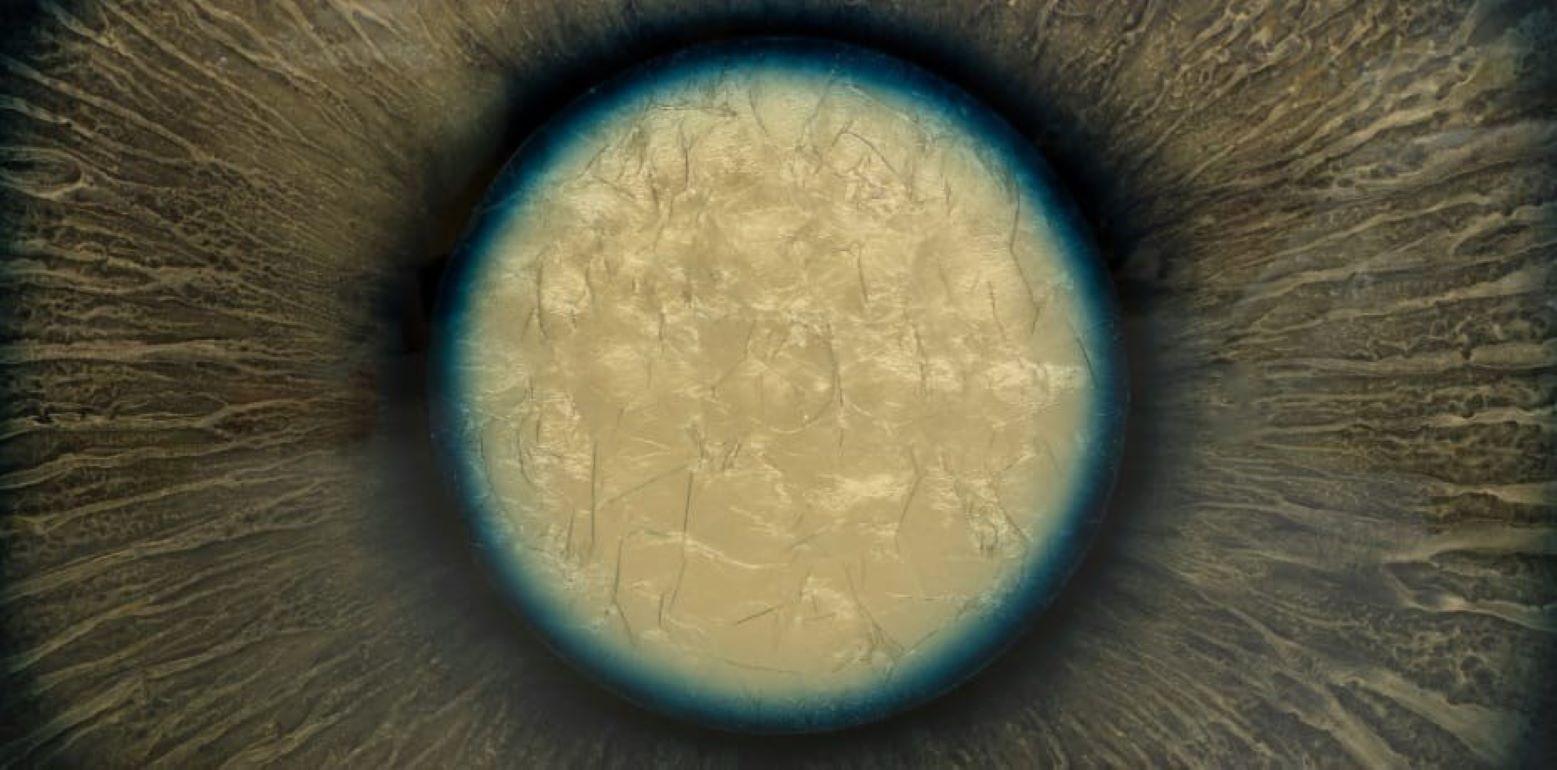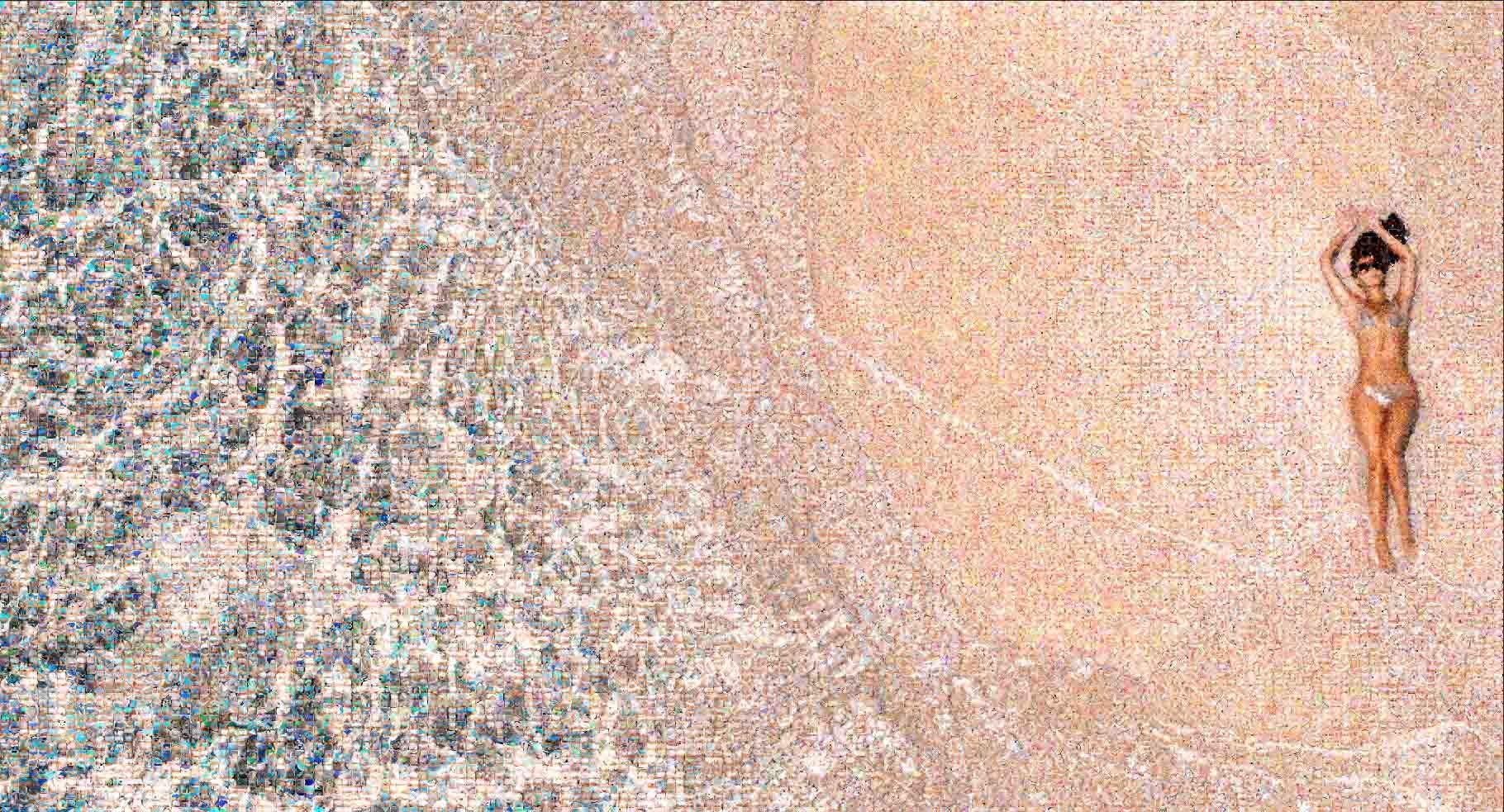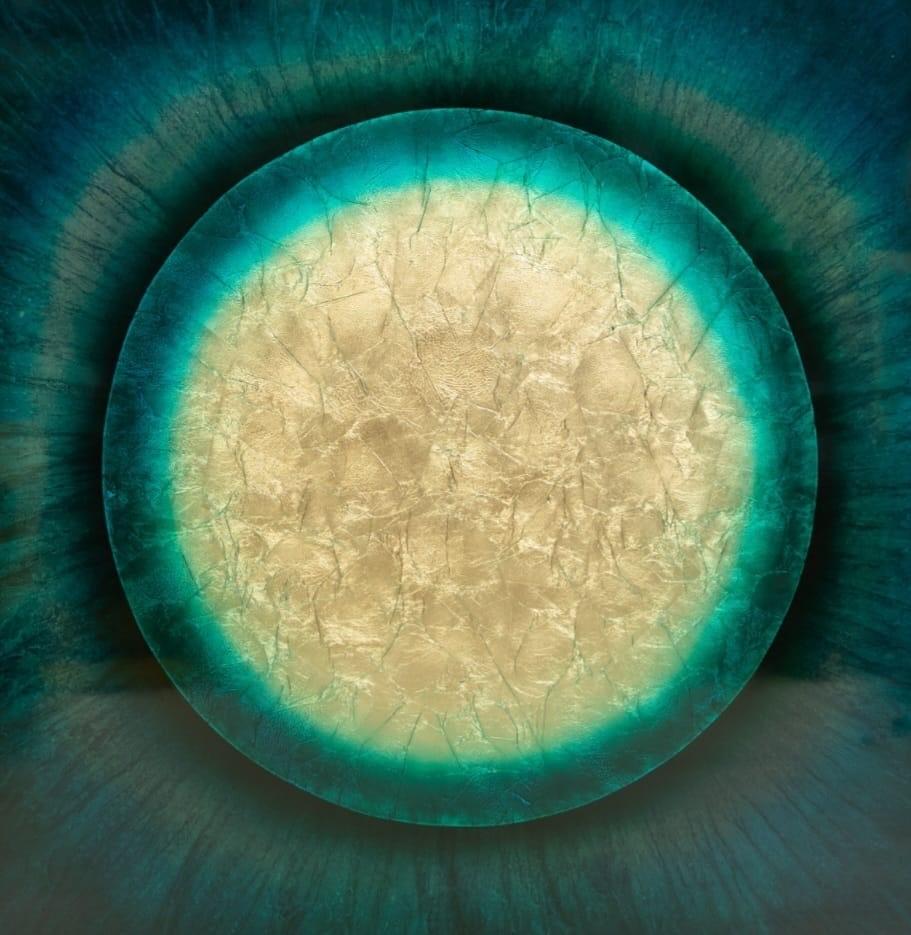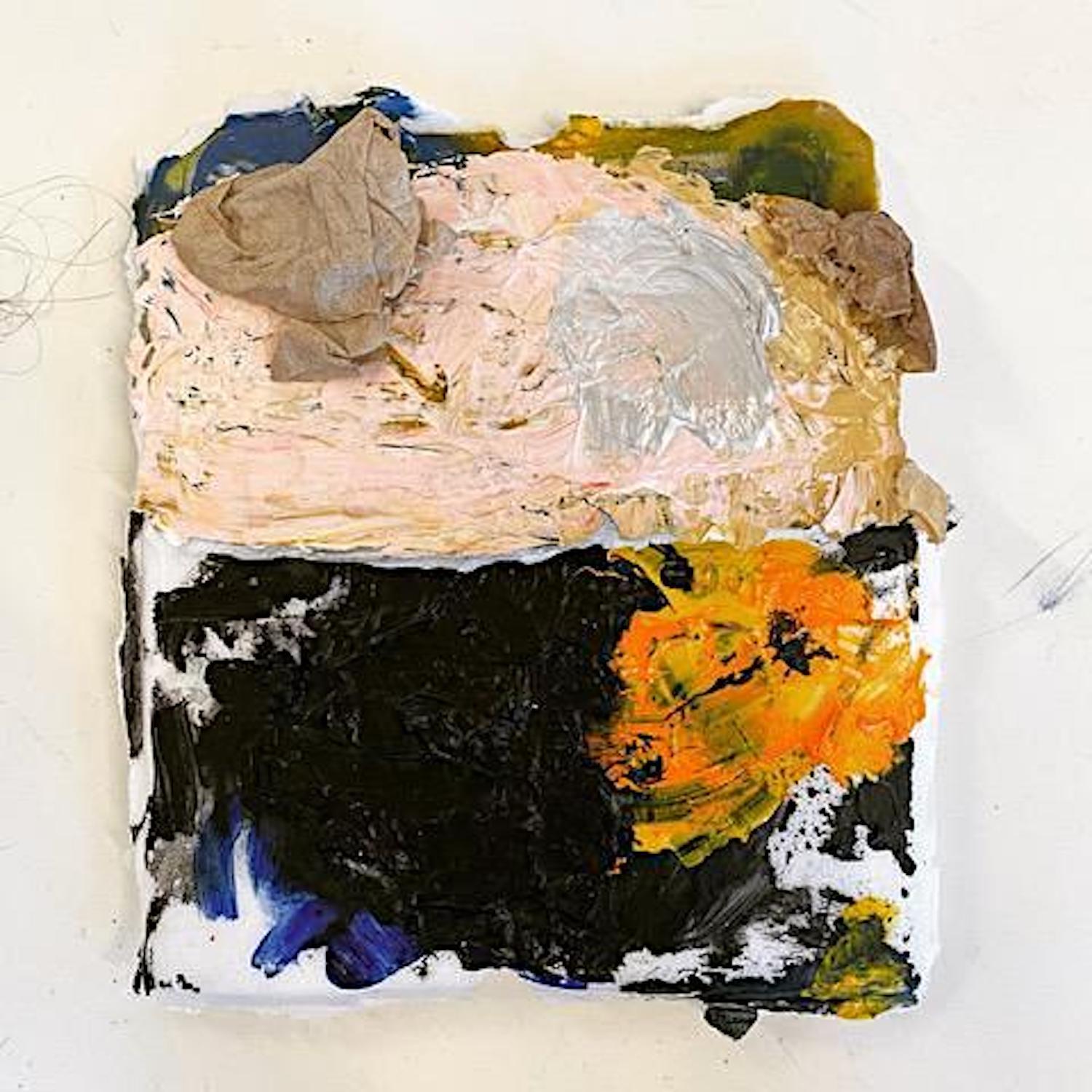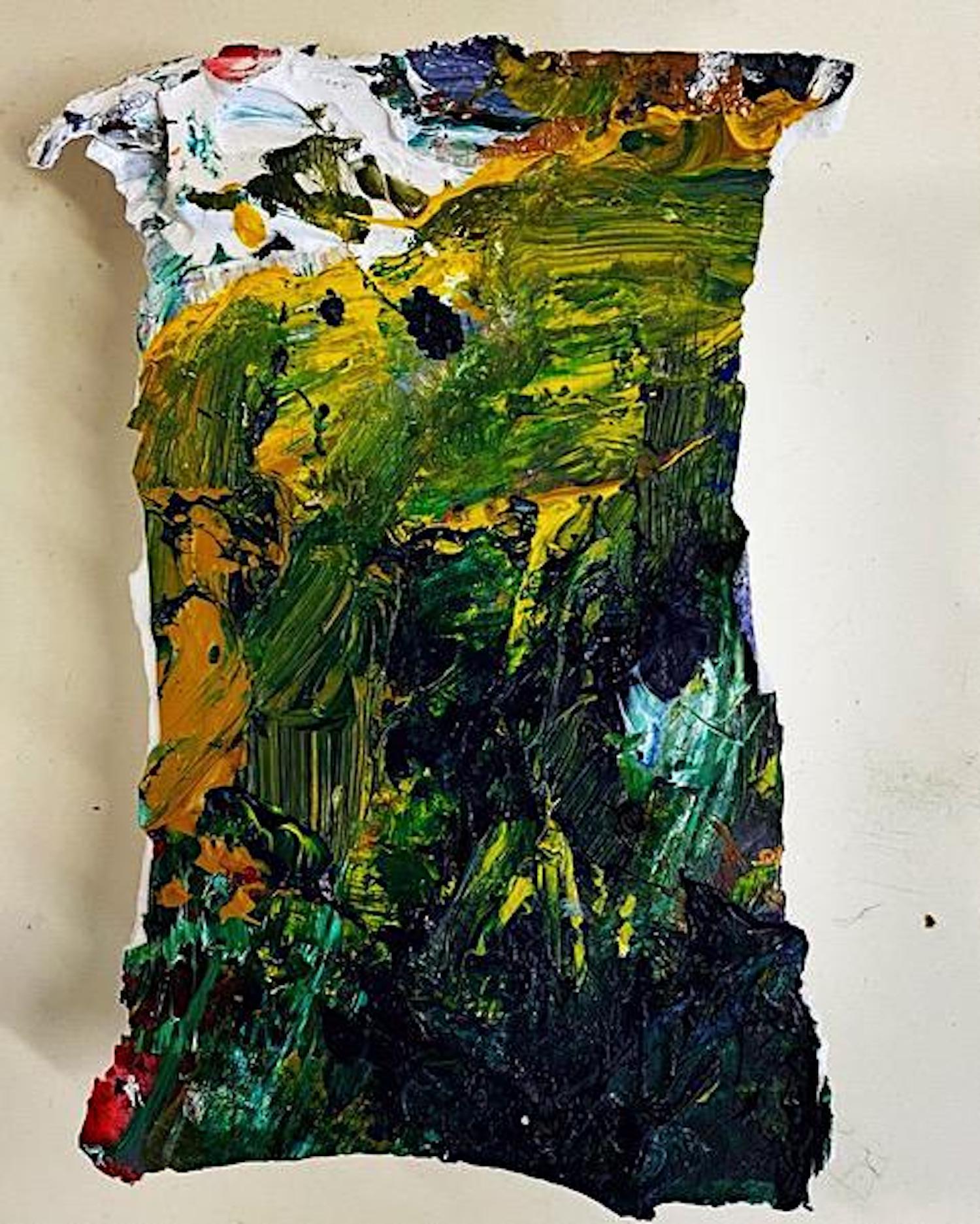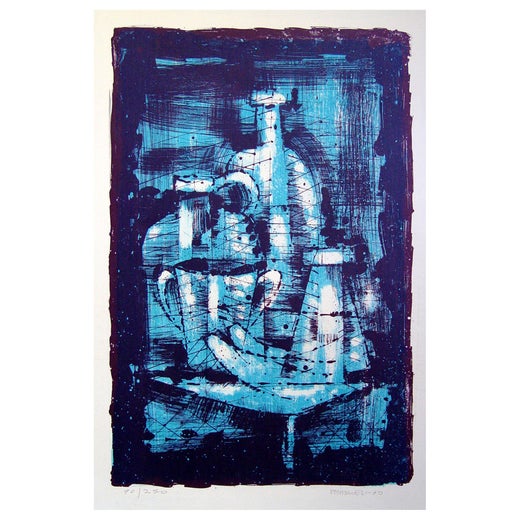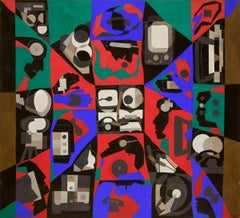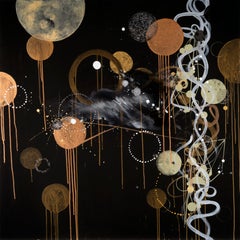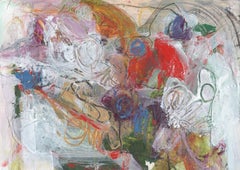
Untitled (Maxwell Pochoir)
View Similar Items
Paul MaxwellUntitled (Maxwell Pochoir)
About the Item
- Creator:
- Dimensions:Height: 37.5 in (95.25 cm)Width: 49.25 in (125.1 cm)Depth: 1.5 in (3.81 cm)
- Medium:
- Movement & Style:
- Period:
- Condition:
- Gallery Location:Denver, CO
- Reference Number:Seller: DCG-231341stDibs: LU2733447391
Paul Maxwell
Paul Maxwell was born in Frost Prairie, Arkansas, in 1925. When Maxwell was nine, the family moved to Bastrop, Louisiana, where he completed high school. Maxwell went on to graduate from Principia College in Elsah, Illinois, in 1950 with a BA in art, followed by graduate work at Claremont College in California. Maxwell was a modern artist and sculptor who developed a technique for using stencils to create thickly textured and layered surfaces, as well as objects he patented as “stencil casting” but that later became known as “Maxwell Pochoir.” He was also known for creating the “Max Wall” in the West Atrium of the Dallas Apparel Mart; although demolished in 2006, it can be seen as a backdrop in the science-fiction movie Logan’s Run. His work is highly abstract and often consists of some kind of grid — a form that is non-hierarchical and illustrates a major theme of his work. Maxwell died in 2015.
(Biography provided by Reeves Antiques)- Stone Quarry, 1960s Abstract Acrylic Paper Collage by Margo Hoff, Purple GrayBy Margo HoffLocated in Denver, COAn original signed framed abstract expressionist painting by mid-century modern Chicago woman artist, Margo Hoff (1910-2008), "Stone Quarry" was created using acrylic, crayon and paper collage on board in shades of purple, blue, brown, white and black. Presented in a custom frame, outer dimensions measure 48 ½ x 40 ½ x 1 ¾ inches. Image size is 48 x 40 inches. Provenance: Estate of the artist, Margo Hoff About the Artist: A prolific artist, Margo Hoff’s exquisite style evolved throughout her career yet was always rooted in the events, people, and places in her life. The human experience was her soul focus, expressed through her eyes alone. Born in 1910 in Tulsa, Oklahoma, Hoff began creating white-clay animals at a young age, giving them to her friends and family. At eleven she contracted typhoid fever and was bedridden for a summer. During her convalescence, she drew and made cutouts, and it was during this time that her bold, artistic imagination came alive. She began formal art training in high school and continued her education at the University of Oklahoma, Tulsa. In 1933 she moved to Chicago and attended the National Academy of Art and the School of the Art Institute of Chicago. Between 1933 and 1960—her Chicago years—Hoff’s works was deeply rooted in a figurative, regionalist style. She often used elements of magical realism, and many of her paintings have dreamlike qualities. As a child she learned about color by grinding down rocks, plants, and berries. Her color pallet during the Chicago years is indicative of her early-life color experimentation as she consistently used warm, earth tones in her work. Hoff was a born adventurer and traveled extensively. She lived, worked, taught, and painted in Europe, Mexico, Beirut, Lebanon, Uganda, Brazil, and China. She also showed at the Denver Art Museum’s Annual Western Exhibitions in 1952-54, 56, and 57. In 1957 she showed along side Colorado modernist Vance Kirkland at the Denver Art Museum’s exhibition, Man's Conquest of Space. What was once a focus on the representational, her work began to change after 1957 when she saw Sputnik in its orbit around Earth. At that moment, feet firmly placed on the ground, she was able to imagine herself in space, looking down from the cosmos, and what she saw was an abstracted world. She then had the opportunity to peer into an electron microscope where once again she was looking down into what seemed to be a realm of pure abstraction. These two events profoundly changed her perspective and she began to move from figural painting to abstract, geometric collage. In 1960, Hoff moved to New York City and she began creating collages. Placing the canvas on the ground, and working from all sides, she used strips of painted paper and tissue—and later painted pieces of canvas—glued onto the canvas surface, building layer upon layer, shape against shape, “action of color next to stillness of color.” She believed these simplified, abstracted forms held the spirit of the subject in the same way poetry reduces words to their essence. These pieces range from aerial cityscapes, to dancers in motions, to flora...Category
1960s Abstract Expressionist Mixed Media
MaterialsAcrylic, Paper, Crayon, Mixed Media, Board
- Media Man, 1970s Abstract Acrylic and Canvas Collage by Margo Hoff, Red PurpleBy Margo HoffLocated in Denver, COAbstract acrylic and fabric collage on canvas in purple, red, green, brown and black, signed by Margo Hoff (1910-2008) painted 1974. Unframed, wrapped canvas measuring 54 x 60 x 3⁄4 ...Category
1970s Abstract Expressionist Abstract Paintings
MaterialsFabric, Canvas, Mixed Media, Acrylic
- 1950s Abstract Composition in Brown, Orange and Blue with Black Parallel LinesBy Herbert BayerLocated in Denver, COWatercolor and ink on paper of an abstract composition of brown, orange and blue shapes between black parallel lines throughout the the piece by Herbert Bayer (1900-1985). Presented in a custom black frame with all archival materials. Framed dimensions measure 17 ⅞ x 22 ⅝ x 1 inches. Image size is 10 ¼ x 15 ½ inches. Painting is clean and in very good condition - please contact us for a detailed condition report. Expedited and international shipping is available - please contact us for a quote. About the Artist: Herbert Bayer enjoyed a versatile sixty-year career spanning Europe and America that included abstract and surrealist painting, sculpture, environmental art, industrial design, architecture, murals, graphic design, lithography, photography and tapestry. He was one of the few “total artists” of the twentieth century, producing works that “expressed the needs of an industrial age as well as mirroring the advanced tendencies of the avant-garde.” One of four children of a tax revenue officer growing up in a village in the Austrian Salzkammergut Lake region, Bayer developed a love of nature and a life-long attachment to the mountains. A devotee of the Vienna Secession and the Vienna Workshops (Wiener Werkstätte) whose style influenced Bauhaus craftsmen in the 1920s, his dream of studying at the Academy of Art in Vienna was dashed at age seventeen by his father’s premature death. In 1919 Bayer began an apprenticeship with architect and designer, Georg Schmidthamer, where he produced his first typographic works. Later that same year he moved to Darmstadt, Germany, to work at the Mathildenhöhe Artists’ Colony with architect Emanuel Josef Margold of the Viennese School. As his working apprentice, Bayer first learned about the design of packages – something entirely new at the time – as well as the design of interiors and graphics of a decorative expressionist style, all of which later figured in his professional career. While at Darmstadt, he came across Wassily Kandinsky’s book, Concerning the Spiritual in Art, and learned of the new art school, the Weimar Bauhaus, in which he enrolled in 1921. He initially attended Johannes Itten’s preliminary course, followed by Wassily Kandinsky’s workshop on mural painting. Bayer later recalled, “The early years at the Bauhaus in Weimar became the formative experience of my subsequent work.” Following graduation in 1925, he was appointed head of the newly-created workshop for print and advertising at the Dessau Bauhaus that also produced the school’s own print works. During this time he designed the “Universal” typeface emphasizing legibility by removing the ornaments from letterforms (serifs). Three years later he left the Bauhaus to focus more on his own artwork, moving to Berlin where he worked as a graphic designer in advertising and as an artistic director of the Dorland Studio advertising agency. (Forty years later he designed a vast traveling exhibition, catalog and poster -- 50 Jahre Bauhaus -- shown in Germany, South America, Japan, Canada and the United States.) In pre-World War II Berlin he also pursued the design of exhibitions, painting, photography and photomontage, and was art director of Vogue magazine in Paris. On account of his previous association with the Bauhaus, the German Nazis removed his paintings from German museums and included him among the artists in a large exhibition entitled Degenerate Art (Entartete Kunst) that toured German and Austrian museums in 1937. His inclusion in that exhibition and the worsening political conditions in Nazi Germany prompted him to travel to New York that year with Marcel Breuer, meeting with former Bauhaus colleagues, Walter Gropius and László Moholy-Nagy to explore the possibilities of employment after immigration to the United States. In 1938 Bayer permanently relocated to the United States, settling in New York where he had a long and distinguished career in practically every aspect of the graphic arts, working for drug companies, magazines, department stores, and industrial corporations. In 1938 he arranged the exhibition, “Bauhaus 1919-1928” at the Museum of Modern Art, followed later by “Road to Victory” (1942, directed by Edward Steichen), “Airways to Peace” (1943) and “Art in Progress” (1944). Bayer’s designs for “Modern Art in Advertising” (1945), an exhibition of the Container Corporation of America (CAA) at the Art Institute of Chicago, earned him the support and friendship of Walter Paepcke, the corporation’s president and chairman of the board. Paepcke, whose embrace of modern currents and design changed the look of American advertising and industry, hired him to move to Aspen, Colorado, in 1946 as a design consultant transforming the moribund mountain town into a ski resort and a cultural center. Over the next twenty-eight years he became an influential catalyst in the community as a painter, graphic designer, architect and landscape designer, also serving as a design consultant for the Aspen Cultural Center. In the summer of 1949 Bayer promoted through poster design and other design work Paepcke’s Goethe Bicentennial Convocation attended by 2,000 visitors to Aspen and highlighted by the participation of Albert Schweitzer, Arthur Rubenstein, Jose Ortega y Gasset and Thornton Wilder. The celebration, held in a tent designed by Finnish architect Eero Saarinen, led to the establishment that same year of the world-famous Aspen Music Festival and School regarded as one of the top classical music venues in the United States, and the Aspen Institute for Humanistic Studies in (now the Aspen Institute), promoting in Paepcke’s words “the cross fertilization of men’s minds.” In 1946 Bayer completed his first architecture design project in Aspen, the Sundeck Ski Restaurant, at an elevation of 11,300 feet on Ajax Mountain. Three years later he built his first studio on Red Mountain, followed by a home which he sold in 1953 to Robert O. Anderson, founder of the Atlantic Richfield Company who became very active in the Aspen Institute. Bayer later designed Anderson’s terrace home in Aspen (1962) and a private chapel for the Anderson family in Valley Hondo, New Mexico (1963). Transplanting German Bauhaus design to the Colorado Rockies, Bayer created along with associate architect, Fredric Benedict, a series of buildings for the modern Aspen Institute complex: Koch Seminar Building (1952), Aspen Meadows guest chalets and Center Building (both 1954), Health Center and Aspen Meadows Restaurant (Copper Kettle, both 1955). For the grounds of the Aspen Institute in 1955 Bayer executed the Marble Garden and conceived the Grass Mound, the first recorded “earthwork” environment In 1973-74 he completed Anderson Park for the Institute, a continuation of his fascination with environmental earth art. In 1961 he designed the Walter Paepcke Auditorium and Memorial Building, completing three years later his most ambitious and original design project – the Musical Festival Tent for the Music Associates of Aspen. (In 2000 the tent was replaced with a design by Harry Teague.) One of Bayer’s ambitious plans from the 1950s, unrealized due to Paepcke’s death in 1960, was an architectural village on the outskirts of the Aspen Institute, featuring seventeen of the world’s most notable architects – Walter Gropius, Marcel Breuer, I.M. Pei, Minoru Yamasaki, Edward Durrell Stone and Phillip Johnson – who accepted his offer to design and build houses. Concurrent with Bayer’s design and consultant work while based in Aspen for almost thirty years, he continued painting, printmaking, and mural work. Shortly after relocating to Colorado, he further developed his “Mountains and Convolutions” series begun in Vermont in 1944, exploring nature’s fury and repose. Seeing mountains as “simplified forms reduced to sculptural surface in motion,” he executed in 1948 a series of seven two-color lithographs (edition of 90) for the Colorado Springs Fine Arts Center. Colorado’s multi-planal typography similarly inspired Verdure, a large mural commissioned by Walter Gropius for the Harkness Commons Building at Harvard University (1950), and a large exterior sgraffito mural for the Koch Seminar Building at the Aspen Institute (1953). Having exhausted by that time the subject matter of “Mountains and Convulsions,” Bayer returned to geometric abstractions which he pursued over the next three decades. In 1954 he started the “Linear Structure” series containing a richly-colored balance format with bands of sticks of continuously modulated colors. That same year he did a small group of paintings, “Forces of Time,” expressionist abstractions exploring the temporal dimension of nature’s seasonal molting. He also debuted a “Moon and Structure” series in which constructed, architectural form served as the underpinning for the elaboration of color variations and transformations. Geometric abstraction likewise appeared his free-standing metal sculpture, Kaleidoscreen (1957), a large experimental project for ALCOA (Aluminum Corporation of America) installed as an outdoor space divider on the Aspen Meadows in the Aspen Institute complex. Composed of seven prefabricated, multi-colored and textured panels, they could be turned ninety degrees to intersect and form a continuous plane in which the panels recomposed like pieces of a jigsaw puzzle. He similarly used prefabricated elements for Articulated Wall, a very tall free-standing sculpture commissioned for the Olympic Games in Mexico...Category
1950s Abstract Geometric Abstract Drawings and Watercolors
MaterialsPaper, Ink, Mixed Media, Watercolor
- Pistachio Nut, 1970s Mixed Media Collage, Paper Collage on Board, Red OrangeBy Margo HoffLocated in Denver, COCrayon and paper collage on board depicting a pistachio nut by 20th century artist, Margo Hoff circa 1970. Presented in a custom wood frame, outer dimen...Category
1970s Abstract Mixed Media
MaterialsCrayon, Mixed Media
- "Alpha, " The Beginning, 1950s Framed Abstract Textured Mixed Media Oil PaintingBy Eve DreweloweLocated in Denver, COMid-century modern abstract oil painting by renowned Colorado modernist woman artist, Eve Drewelowe (1899-1989) titled "Alpha - The Beginning" painted in earth tones with hues of ivo...Category
Mid-20th Century Abstract Abstract Paintings
MaterialsCanvas, Mixed Media, Oil
- Fabric Shop, Abstract Painting Collage: Pink, Blue, Green, Black, Orange, GreenBy Margo HoffLocated in Denver, COFabric Shop is a vintage painting by Margo Hoff (1910-2008). Painted in hues of pink, coral, orange, green, blue, black, green and yellow with canvas collage on canvas. Presented in a vintage/original frame, outer dimensions measure 16 ¼ x 16 ¼ x 1 ½ inches. Image size is 15 x 15 inches. Provenance: Estate of the Artist, Margo Hoff A prolific artist, Margo Hoff’s exquisite style evolved throughout her career yet was always rooted in the events, people, and places in her life. The human experience was her sole focus, expressed through her eyes alone. Born in 1910 in Tulsa, Oklahoma, Hoff began creating white-clay animals at a young age, giving them to her friends and family. At eleven she contracted typhoid fever and was bedridden for a summer. During her convalescence, she drew and made cutouts, and it was during this time that her bold, artistic imagination came alive. She began formal art training in high school and continued her education at the University of Oklahoma, Tulsa. In 1933 she moved to Chicago and attended the National Academy of Art and the School of the Art Institute of Chicago. Between 1933 and 1960—her Chicago years—Hoff’s works was deeply rooted in a figurative, regionalist style. She often used elements of magical realism, and many of her paintings have dreamlike qualities. As a child she learned about color by grinding down rocks, plants, and berries. Her color pallet during the Chicago years is indicative of her early-life color experimentation as she consistently used warm, earth tones in her work. Hoff was a born adventurer and traveled extensively. She lived, worked, taught, and painted in Europe, Mexico, Lebanon, Uganda, Brazil, and China. She also showed at the Denver Art Museum’s Annual Western Exhibitions in 1952-54, 56, and 57. In 1957 she showed along side Colorado modernist Vance Kirkland at the Denver Art Museum’s exhibition, Man's Conquest of Space. What was once a focus on the representational, her work began to change after 1957 when she saw Sputnik in its orbit around Earth. At that moment, feet firmly placed on the ground, she was able to imagine herself in space, looking down from the cosmos, and what she saw was an abstracted world. She then had the opportunity to peer into an electron microscope where once again she was looking down into what seemed to be a realm of pure abstraction. These two events profoundly changed her perspective and she began to move from figural painting to abstract, geometric collage. In 1960, Hoff moved to New York City and she began creating collages. Placing the canvas on the ground, and working from all sides, she used strips of painted paper and tissue—and later painted pieces of canvas—glued onto the canvas surface, building layer upon layer, shape against shape, “action of color next to stillness of color.” She believed these simplified, abstracted forms held the spirit of the subject in the same way poetry reduces words to their essence. These pieces range from aerial cityscapes, to dancers in motions, to flora...Category
1980s Abstract Abstract Paintings
MaterialsCanvas, Mixed Media, Acrylic
- TransmitterLocated in Washington, DCExceptional painting by Maryanne Pollock titled "Transmitter". Work is signed and dated 2021 on reverse. Painting measures 48" x 48" and is mixed media on canvas. Artists Robert ...Category
21st Century and Contemporary Abstract Abstract Paintings
MaterialsMixed Media
Price Upon Request - Untitled No 13By Stephanie VisserLocated in Saugatuck, MIExploding with emotion, energy and color Stephanie Visser's mixed media paintings on paper are framed in a simple and clean white wood frame with thick acid free matting and UV plexi...Category
2010s Abstract Abstract Paintings
MaterialsMixed Media
- Untitled No 11By Stephanie VisserLocated in Saugatuck, MIExploding with emotion, energy and color Stephanie Visser's mixed media paintings on paper are framed in a simple and clean white wood frame with thick 4-ply acid free matting and UV...Category
2010s Abstract Abstract Paintings
MaterialsMixed Media
- Untitled No 9By Stephanie VisserLocated in Saugatuck, MIExploding with emotion, energy and color Stephanie Visser's mixed media paintings on paper are framed in a simple and clean white wood frame with thick 4-ply acid free matting and UV...Category
2010s Abstract Abstract Paintings
MaterialsMixed Media
- Untitled No 5By Stephanie VisserLocated in Saugatuck, MIExploding with emotion, energy and color Stephanie Visser's mixed media paintings on paper are framed in a simple and clean white wood frame with 4" thick acid free matting and UV pl...Category
2010s Abstract Abstract Paintings
MaterialsMixed Media
- West IndustrialBy Liberty BlakeLocated in Salt Lake City, UTWest Industrial, 2018, by Liberty Blake. 48 x 46 inches (wood cradle, no frame), assemblage and mixed media. Artist Statement: I would describe myself as an abstract collage artis...Category
2010s Abstract Abstract Paintings
MaterialsPaper, Mixed Media, Newsprint

